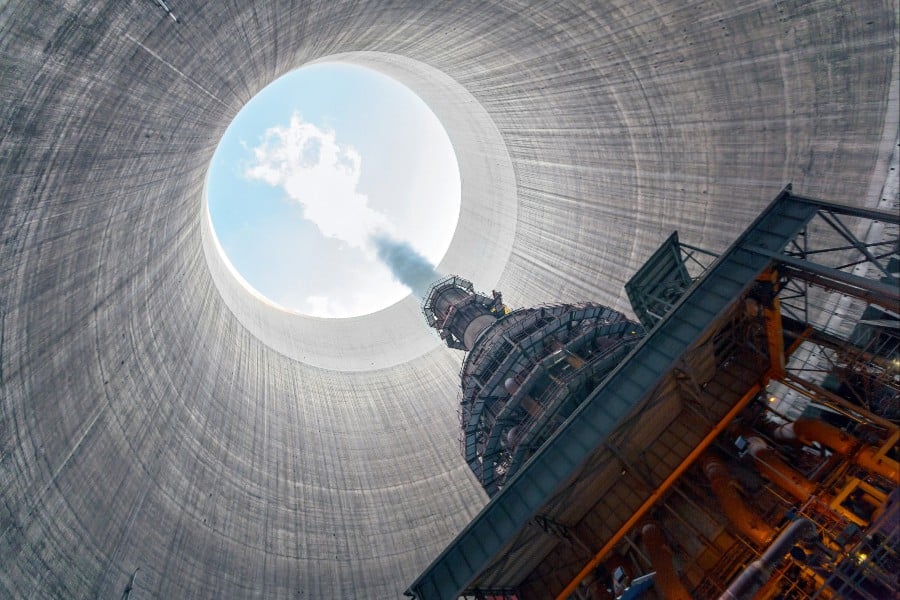Protecting Europe’s critical infrastructure


James Thorpe
Share this content
Protecting critical infrastructure is vital to security, economy and the health and safety of citizens, writes Ben Linklater, Commercial Director, OPTEX Security EMEA.
Whilst much in the press is focused on cyber-attacks, protection against physical attacks is important.
In recent times, European policymakers have become increasingly concerned about the rise of hybrid threats, a combination of cyber and physical sabotage on Europe’s critical infrastructure.
The Centre for European Reform (CER) cites not only several cyber-attacks, but also incidents such as French telecommunication and internet services and German railways being physically sabotaged.
In the face of increased risks to energy infrastructure in Norway, the Netherlands and Belgium and Sweden, various governments have called on the private sector to be vigilant in ensuring the resilience of their country’s economy and society.
And in the UK, the government has recently unveiled its new National Risk Register, described as being more transparent than ever before, assessing the key threats risks and their potential impact on the UK’s safety, security or critical systems on a national level.
Given that the physical infrastructure, such as power stations, solar farms, substations and carbon capture facilities are often in very large, remote sites and exposed to harsh weather conditions, their protection is no easy task.
Also, current security systems are ageing whilst budgets are shrinking.
Keeping our critical infrastructure safe today relies on the intelligent use of new technology in a layered approach which is economical and easy to upgrade in the future.
Keeping critical infrastructure safe from terrorists, vandals or intruders is complex because of the sheer scale of the sites and the type of threats they face: The Next Generation Data Centre in Wales, for example, is housed in a building 750,000 sq ft large; nuclear sites such as Sellafield sit on 650 acres; the solar energy plant Núñez de Balboa in Spain is 2,500 acres and the Jänschwalde power plant in Germany sprawls over 6,900 acres.
The common concern here is terrorism: Contaminated water supplies, for example, pose a risk to life, whereas an attack on an oil and gas installation could result in a catastrophic explosion.
Electric substations also have to consider the health and safety of an intruder cutting through a copper cable carrying 100,000 volts.
The substation is liable for any resulting death or injury because it is deemed to have failed in its duty of care by not having security to stop the person trying to steal the cable.
What is obvious is that the needs of each site are distinct and require different combinations of security technology.
Article Chapters
ToggleLayered protection
The best security combines several different technologies to form a multi-layered intrusion detection system. Early detection of a potential intrusion starts outside the perimeter fence.
Modern fibre optic technologies, such as OPTEX’s Fibre SenSys and Echopoint series, can detect vibrations and unusual activity, such as loitering or approaching vehicles.
At the fence line itself, Light Detection and Ranging (LiDAR) products can be used to identify activities such as scaling the fence or people crossing the site and protect critical buildings.
Different layers of detection can be used depending on the operational and locational requirements of each site.
Critical infrastructure is often situated in the remote, windswept or coastal areas of a country.
Detection systems such as LiDAR can work in complete darkness and can be programmed to ignore the effects of gale-force winds or the movement of wildlife.
Different sensing technologies such as acoustic solutions can support video and CCTV systems and improve the reliability of detection systems, including filtering out false alarms which is so important in critical infrastructure sites.
So, when choosing how to protect critical infrastructure, it’s important to think about the location, the environmental conditions and the possible threats – and then what technology is going to give the security team the best intrusion detection and support.
The approach and pre-warning
Distributed acoustic sensing solutions, such as OPTEX’s EchopointTM, provide up to 100km of detection from the alarm processing unit.
These fibre optic cables can be buried in the ground or fence mounted and the latest EchopointTM series uses a highly advanced algorithm to filter out false alarms and provide point detection of an intruder’s location within six meters.
It can also indicate whether someone is walking or running, whether they are trying cut or disable the fence or whether a car, truck or machine is approaching or even, perhaps, digging.
Large mining sites in South Africa and military sites or airports in Europe find this feature particularly useful.
The level of data provided by these intrusion detectors helps the security team make a faster and more appropriate response; it can be used to activate cameras to track intruders, lock security gates, trigger security lighting or voice alerts and dispatch security personnel as required.
Protecting the fence line
The perimeter fence itself sometimes has a second inner fence.
At extremely high security sites, such as power plants, between the perimeter and inner fence is a no man’s land which needs protecting and active infrared beams can provide the ideal solution.
Active infrared beams will ignore animals, weather changes or foliage in the area, but when an intruder breaks the invisible beam, an alarm is triggered in the control centre.
Alternatively, LiDAR detection systems can be mounted just inside the fence to detect anyone using access equipment or a nearby building to jump over the fence line.
OPTEX’s REDSCAN Pro, for example, mounted at six metres from the ground, provides a 100m detection area which can be split into eight different preset areas or zones, each set to recognise objects of different sizes and moving at different speeds, such as people, cars or the local wildlife.
It has a built-in camera, which looks 50m both left and right and supports post-event analysis.
A different configuration for data centres
The same technology can be used to protect data centres but in a different configuration.
Here, the detection system is focused on the side and roof of the building rather than the perimeter of the site.
If somebody comes within a metre of the building or attempts to climb in through the roof, an alarm is triggered.
The fibre optic sensors are mounted on the wall of the building rather than on the fence line so that if the intruder tries to drill a hole in the wall, the security team knows where they are trying to gain entry.
OPTEX recently reviewed the security of a group of data centres after intruders drilled through the wall of a building.
They made several attempts at drilling holes to gain access and were successful; they stole from the data centre and largely shut down a communications network.
Mounting Fibre SenSys on the fabric of the building or using REDSCAN would have sent an early alert to security teams at the first attempt to enter the building.
Strengthening old defences
This type of layered defence can also be used to supplement and upgrade existing security systems. Fence-mounted detection relies on a fence in a good state of repair.
If it’s dilapidated or has too much vegetation on it, they are more prone to false alarms.
Security teams may ask for a new fence-mounted solution to be installed but the decision then is whether to spend hundreds of thousands of pounds upgrading the fence line or, instead, investing that money into electronic security by putting LiDARs behind that fence line and leaving that physical barrier there.
Older copper-mounted systems are susceptible to interference or vibration caused by lightning striking the ground a mile away and can stop the system from working.
Electric substations often have metal fence perimeters which absorb electrical interference, induct it into the copper cabling and trigger false alarms.
Over time, water seeps into the cable, which then rusts, resulting in the quality of detection declining.
For this reason, copper cabling should be replaced every four to five years, increasing both maintenance costs and personnel time.
Fibre optic cables, on the other hand, are immune to water ingress, electrical, radio or radar interference and typically have a 20 year service life, making it a durable and cost-effective solution.
A number of utility sites are looking to upgrade old security systems by installing electric fencing.
But, even this might only provide a 30 second delay before the intruder is on the site. These fences can cost hundreds of thousands of pounds and take months to install.
A more prudent choice might be to invest the money in a supplementary electronic security system using REDSCAN.
For example, an electricity company with 40 sites that need upgrading might find this option reduces the cost by almost half for each site.
The new system will also prove more resilient as future upgrades may simply require software updates rather than the major groundworks needed to replace a fence.
Sometimes an old fence line has to be removed and replaced.
By mounting LiDAR on a mobile tower next to the perimeter fence provides a 100m second line of defence until the new detection system is installed.
These systems can be deployed in a couple of hours and they can be moved along the fence as work on the perimeter progresses around the site.
Protecting critical infrastructure is also protecting the state of the nation.
It is a complicated process because the various types of infrastructure, potential threats and remote locations mean there is no one size fits all approach.
Also, the security has to be layered so that if one line of defence is broken, other detection technologies will follow the intruders’ next steps.
The security needs of critical infrastructure sites are also changing.
There is greater reliance on electricity by all parts of the transport sector and society in general; the current security of our critical infrastructure is ageing and, with climate change, it has to be reliant and adaptable to increasingly adverse weather conditions and the changing nature of malicious attacks.
New fibre optic and LiDAR technologies, such as Fiber SenSys and REDSCAN, enable modern systems to have flexibility, durability and reliability, which can be layered onto existing systems to upgrade them quickly and efficiently.

